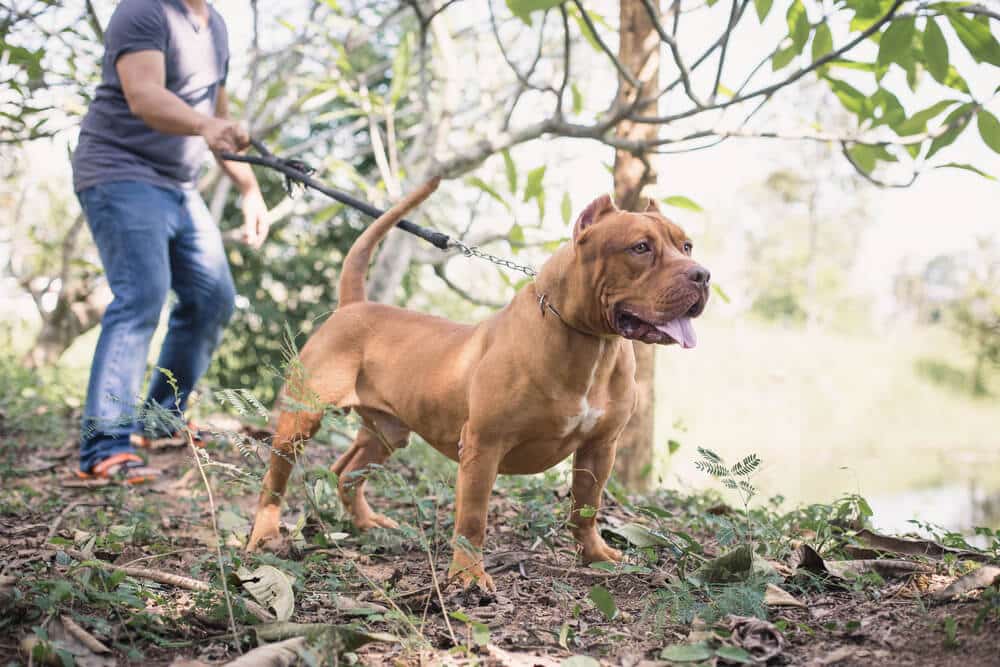Tips to Manage Reactive Dogs on a Leash

You’ve undoubtedly come across dogs who have trouble walking on a leash. If you’re reading this now, that dog might be your own! Dogs struggle to leash train for several reasons. Let’s discuss what dog leash reactivity (aka, dog leash aggression) is, how it manifests, and how you can work with your dog to limit the reactive or aggressive behaviors so you both can enjoy going for walks.
What Causes Dog Leash Reactivity or Aggression?
Leash aggression, or leash reactivity occurs when dogs pull, lunge, bite or exhibit other unwanted behaviors while on a leash. This can be dangerous to the dog, other animals, and their owner.
But what causes leash reactivity?
Here are some reasons your dog may be struggling during their time on the leash:
Frustration
Your dog wants to play! So, they become easily frustrated staying alongside their owners when they want to play. If your dog naturally has poor impulse control, frustration easily leads to leash aggression. First, your dog will just seem excited, then it takes a turn to aggression. It happens in a split second and can be dangerous.
Inhibits Instinctual Interaction
Dogs have their own language. When they are off leash, they meet other dogs in their own instinctual way. They slowly meet each other, sniff each other, and decide how to treat each other.
Leashes restrict movement, and suddenly this instinctual ritual can’t play out in a safe way. Dogs who prefer caution will want to move away. Leashes can make this difficult to do. If growling and aggression begin, the owner may grow tense, further escalating the interaction.
The Owner is Causing Stress
Dogs read body language. If a dog’s owner becomes stressed during certain situations in anticipation of their dog’s negative behavior, the dog may feel that stress. It becomes a self-fulfilling prophecy.
Some dogs want to protect their owners. So, even though they are well-behaved with other people, they become aggressive when their owner is in the room or holding their leash.
Past On-Leash Trauma
If your dog has been punished on leash or had a traumatic incident with another animal on a leash, they might have aggressive leash behaviors. Reactive leash training for this type of trauma is necessary but rewarding.
According to the Animal Humane Society, “Every negative experience will set your progress back, so it’s best to avoid them if possible. If you live in an area with lots of dogs, consider taking your friend somewhere less canines are present.”
Leash Tension is a Stressor
When your dog is interacting with another dog on a leash, it’s a precarious situation. When you pull them to remove them and continue on your way, they may react. This can lead to an outburst. As the dog owner, it’s your job to gently urge your dog away. Reacting in a calm way makes the biggest difference.
What if My Dog Pulls on the Leash?
Being outside with all the smells and action is a very stimulating experience for dogs. Most of the time, they are pulling because they are excited! However, pulling can be painful for both you and the dog.
Dogs who excessively pull on their leash are known to cause damage to their trachea and neck which leads to coughing and other symptoms.
There are many things you can do to curb this behavior, but we’ll focus on the two most common. First, use a harness instead of a neck collar. This distributes pressure around the dog’s back and chest instead on their sensitive necks.
Second, reward loose leash behavior. Keep little treats in your bag to reinforce a loose leash. Positive behavior modification works.
How to Stop a Dog from Lunging on a Leash?
This one is a little harder to manage. Your dog may be excited, protective, or trying to solicit play from another dog. What it really comes down to is proper leash behavior. Like when your dog pulls on their leash, consider getting back to basics. Start by teaching your dog to sit, then teach them to operate on loose leash. Then, teach them to heel, and to listen to commands of your choosing, always following positive behavior modification techniques.
Instead of acting on their instinctive behavior, they’ll look to you for direction.
What Can I Do if My Dog is Biting the Leash When Walking?
This is a very common behavior for puppies. Why?
Leashes are pretty much tug-of-war toys to the untrained dog. Therefore, it’s important to make the leash a less exciting tool for walking. Start by touching the leash (without picking it up). Make it so it’s not a big deal.
Once your dog stops reacting to you touching the leash, you can move on to getting them used to sitting calmly while being fitted with their leash.
Lastly, teach your dog to heel while wearing their leash. Building upon each goal leads to overall success. Soon, your dog won’t be tempted to bite their leash anymore.
I’ve Tried Everything! What Do I Do Now?
If you feel you’ve done all you can to help your dog become less reactive on leash and need some guidance, we suggest reactive leash training at K9U Chicago. Living in Chicago, walking your dog on a leash isn’t an option, it’s the law. Therefore, it’s important that your dog be trained to behave and even enjoy their time on a leash.
Contact us today to learn more about our reactive leash training and other training courses.


